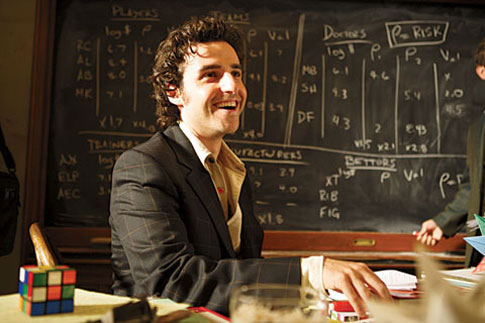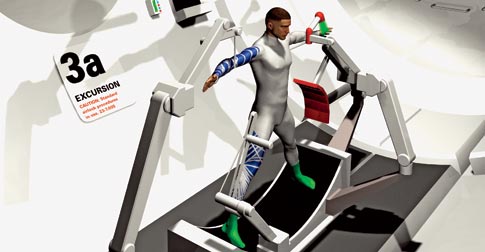Ah, Friday nights parked in front of the tube: salty snacks, fake blood, mathematics. Indeed, the CBS crime drama Numb3rs has finally brought math into prime time, as the mathematician Charlie Eppes (played by David Krumholtz) helps his FBI-agent brother (Rob Morrow) track down outlaws by detecting patterns in criminal behavior. In recent episodes, the duo also localized a deadly virus and uncovered sinister engineering flaws. And unlike most
Hollywood props, Charlie’s equations may actually work off the set.
“A lot of people have the idea that because it’s a network TV show, of course the math will be phony,” says Nick Falacci, who created the show, which premiered in January, with his wife, Cheryl Heuton.
But any grumbling has quickly abated, thanks in part to the efforts of Gary Lorden, chair of the mathematics department at Caltech. Not only do Lorden and his colleagues advise the show’s writers, they literally write the onscreen equations. To make sure that the main character didn’t appear to falter with symbols, graduate student David Grynkiewicz’s hand once doubled as Charlie’s as he scribbled on a blackboard.
Lorden also checks scripts to guard against implausible plots, such as those that would require the mangling of major theorems. Numb3rs occasionally pushes the limits of credibility, particularly in the range of mathematical specialties that the show’s protagonist has mastered. But, Heuton notes, “in the real world, math is doing even more incredible things than we’re doing,” cracking more cases in life than it has so far on television.
Many of the show’s stories come straight from the news. For example, recently an analyst in Maryland chewed through the locations a serial bank
robber had hit in order to predict his future targets; cops arrested the crook while he was casing his next job. On the show, Charlie helps the FBI track a thief in the same way, with the requisite dramatic twist (someone gets shot). And in the pilot episode, Charlie traces the home of a serial rapist based on the locations of his attacks. Kim Rossmo, a real-life mathematician-detective, developed this very equation, which solved a Louisiana rape case in 1998. Rossmo watched that episode, which includes a scene that compares scattered crimes with droplets sprayed by a lawn sprinkler–a metaphor he used in our April 2003 profile of him. “I can say with 99 percent confidence,” he notes, “that the Popular
Science article is where the TV writer got the information.”







